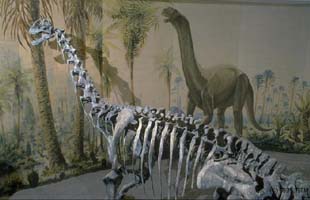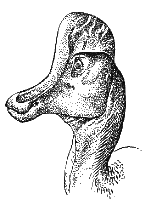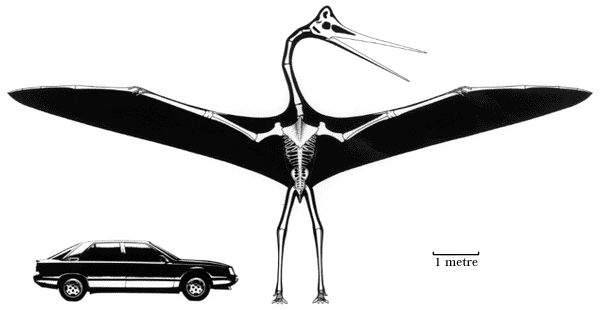 Dino Life
Dino Life 
Origins of the Dinosaurs
The Lizards saw the decline of the paramamals. The dinosaurs
saw the decline of the lizards and the extinction of the
paramamals. The arrival of the dinosaurs had dramatic
consequences for all other land vertebrates, including the
lizards and paramamals. Dinosaurs dominated the earth for 140
million years. They began as insect-eating, lizard-like forms
during the “Age of the Paramamals”. They lived along
the edges of rivers and lakes and ate fish and insect larvae. As
they grew larger, they attacked any paramamal that came to the
waters edge for a drink. The dinosaurs adapted to this way of
life. Their tails grew bigger and stronger for swimming. At the
same time their hind legs grew larger and stronger than the front
ones. the legs were held under their bodies, instead of sprawled,
lizard-like position. When the dinosaurs left the water, it was
hard for them to walk on all fours since the back legs were
stronger then front ones. So they walked on their hind legs,
using their tail for balance, these two-legged, meat-eating
reptiles could move faster than the four-footed paramamals.
All early dinosaurs were flesh-eaters. For the prey of
flesh-eaters, there were two ways of surviving( 1-Grow small
& numerous or 2- grow gigantic). The Herbivores(Plant-Eaters)
took the second way.
THE GIANT PLANT-EATERS
The first plant-eating dinosaurs developed into giant
sauropods. The largest were up to 100 ft. long and weighed over
88 tons. They could swim and they lived in herds, mostly in the
swamps. Their internal temperature most have beer very constant.
Like the advanced paramamals they also developed separate systems
for chewing and breathing as well as muscular cheeks.
The strange headpieces of the duckbills contained sensitive
organs that warned them of approaching danger. The horns on the
head of the triceratops protected them against enemies and also
served in trials of strength between males.
Although the dinosaurs adapted very well to changes in plant
life, all dinosaurs vanished suddenly 64 million years ago.
Dinosaurs on land, in the sea, and in the air all vanished at the
same time. This is very different to explain. We still don't know
why.
One group of carnivorous dinosaurs lost their teeth and
became an eater of dinosaur eggs. It could easily speed away from
danger on it's spindly legs.
Weather plant or meat-eaters, dinosaurs fell into 2
categories, large and small. Giant plant-eaters didn't fear small
carnivores, and small plat-eater could always escape the slow and
lumbering giant meat-eaters. But dinosaur eggs were always easy
prey, and so were newly hatched young. Young dinosaurs most have
lived in the undergrowth until they were big enough to go in the
open. They probably controlled their temperature by alternately
seeking sun and shade. Their way of life must have been very
different from that of the adults.
THE LAST OF THE DINOSAURS
The last 40 million years of the” Age of the
Dinosaurs” saw the modern flowering plants appear. They were
tougher then the early ones. The most successful dinosaurs. the
horned and duckbilled types, developed cutting, and crushing
teeth for chewing them. It would have taken several days for such
huge bulk to warm up or cool down just a few degrees, no matter
what the weather was like. With a constant body tempter, all the
internal systems can work steady rate. This advantage can be had
by burning up food very fast and having some form of insulation,
or increasing in size.
ATTACK AND DEFENSE
Plant eating (Stegosarous) was about 30 ft. long. He was
protected by bony plates along his back. On his tail was two sets
of sharp spikes. This was good defense against the flesh-eating
T-rex who atacked before eating.

Back to Dinosaur home page
 Dino Life
Dino Life 
 Dino Life
Dino Life 
